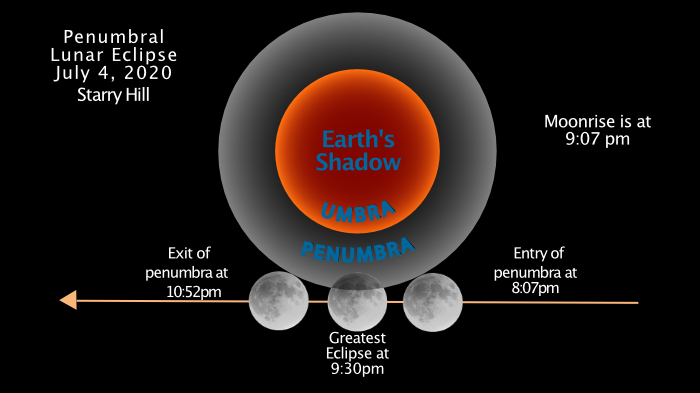| 2020 July 4: Penumbral Lunar Eclipse (2020-6-08) ⬅︎ |
 |
On July 4th, 2020, a penumbral lunar eclipse will be occurring. This type of eclipse can be hard to detect unless
you are looking for it because the moon only darkens a bit.
To understand this, first imagine sunlight shining on the earth. The earth, of course, blocks some of the light which
creates a shadow that extends into space beyond the earth. The shadow is a bit complex in that it has two parts --
a central umbra that is red since earth's atmosphere scatters the blue light that grazes its edges. Surrounding the
umbra is a much lighter penumbra which is more neutral in color.
Most people are aware of total lunar eclipses in which the moon travels into the umbra and turns a dark red.
But, with a penumbral lunar eclipse, the moon travels only into the penumbra.
In the eclipse on July 4th, only the upper part of the moon will enter the penumbra. (see above). Also, the eclipse
will have started before the moon rises so, from the Starry Hill region, we'll be missing the first part.
The top of the moon will already appear a bit darker while the rest of the moon appears like a normal full moon.
Most people probably wouldn't even notice the slight difference. But if you look closely, you'll see and you'll know.
Good luck!
Be sure to check out our Star Guide feature with its tools for knowing what's out each night and where to
look.
|
| |



